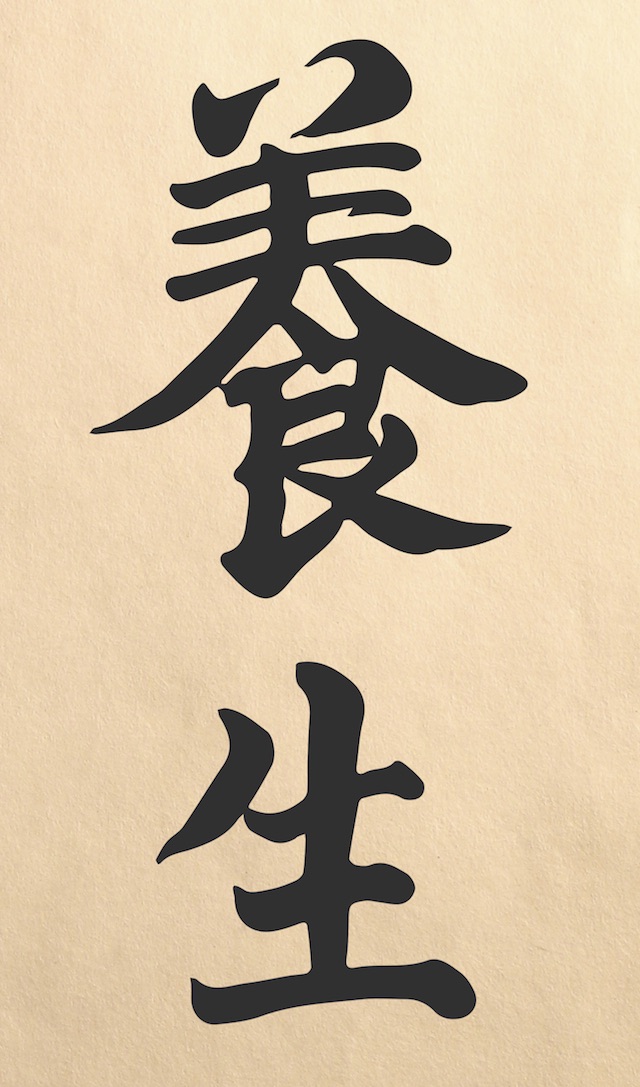Yangsheng (traditional Chinese: 養生, modernized Chinese: 养生, pinyin: yǎngshēng, Wade-Giles: yang sheng, pronunciation: soundfile) means “care for life” or “nourishing life force”. Yangsheng practices aim to further long living and staying young. They comprise corporeal and breathing exercises as well as teachings on meditation.
Meaning of the Chinese characters
Yang means to support, to raise, to nourish or to keep. Sheng means (giving) birth, life or (being) alive.
Together both characters mean “care for life” in the sense of nourishing one’s living, vital qualities. Thus the notion of Yangsheng describes methods to improve or maintain one’s bodily health in order to be able to live a vivacious and spirited life.
Video “Calligraphy Yangsheng”
Yangsheng and Yangshen
Yangsheng is closer connected to the body than the related practice of Yangshen – the nourishment of the spirit – although the focus of both is set on the harmony of body and mind as well as on spritual awareness.
Yangsheng can best be described as a method to develop a conscious approach towards oneself, a mechanism of self-support. Its holistic approach involves body, soul and spirit. Yangsheng does not look at each of them separately, but considers their interaction and their function for the building of behaviour patterns.
Modern Yangsheng
Historically, mental and spiritual exercises were paramount in Yangsheng practice.
See: History of Yangsheng – From the beginning to Daoism
The modern Yangsheng practices of today share the same roots, e.g. the five elements, the three treasures Jing, Qi and Shen and the principle of the middle way resp. the avoidance of extremes. Complementing the traditional teachings different sets of Qigong Yangsheng exercises have evolved.
Depending on the lineage modern Yangsheng rests on three to four pillars: (1) movement / Qigong routines, (2) breathing techniques, (3) meditation practice and (4) diet – an area of increasing importance concerning the assessment of health risks especially in the developed countries.
Qigong Yangsheng
There are different Qigong systems that focus on the principle of Yangsheng.
One example is Yangsheng Qigong after Prof. Jiao Guorui from Beijing, another example is Daoyin Yangsheng Gong as taught at Beijing Sports University.
In the following video you can see Tina Faulkner demonstrating a Daoyin Yangsheng Gong routine, which is also used in working with cancer patients:
Yangsheng in other Chinese Arts:
Calligraphy, Painting and the I Ging
Calligraphy and (traditional) painting are other ways to care for life. Herein, the care for life lies in the naturalness of the movements, the tranquility of the spirit in exercising the art and the contemplation of the part of nature to be pictured or the meaning of the characters.
Even the divination techniques of the I Ging can offer an understanding of life and insights into life choices. If interpreted in a strictly practical, non-esoteric way – following the Chinese philosophical heritage of not tearing apart theory and practice – they can be guidelines towards a better care for life.
Audio file “pronunciationYangsheng”
Author: Taiji-Forum
Images: Taiji-Forum and Wang Ning


